Hawthorn
A very common and healthy plant to forage from.
| Hedgerow Type | |
| Common Names | Hawthorn, May, Maythorn, Whitethorn |
| Scientific Name | Crataegus monogyna/laevigata |
| Season Start | Mar |
| Season End | Nov |
Fruit
The orange to deep red berries, typically with one stone although there can be more in some species or hybrids, hang in clusters in the Autumn.
Possible Confusion
With its distinctive leaves it is quite hard to confuse this plant with any other.
Smell
The flowers have a bitter almond or marzipan smell.
Taste
The berries taste a bit like a slightly over ripe apple.
Frequency
Common.
Collecting
The leaves can be collected in Spring for use in salads or at any time for teas.
The petals can be used for salads.
The berries are best after a frost in Autumn but as frosts appear later and later try the berries, they are ready when sweet. We also have freezers now so the berries can be ‘bletted’ (frozen) artificially.
Medicinal Uses
All parts of the hawthorn are good for regulating blood pressure but the leaves are reported as the best and used to make a tea.
Other Facts
The Hawthorn has a few different species and many hybrids growing in the UK but the most common is monogyna followed by the Midland Hawthorn, laevigata. Both can grow as a bush like shrub or more like a tree with monogyna usually being more upright.
The berries contain a large amount of pectin and are a great addition to jellies and jams to help them set. The berries make a fine jelly on their own and just the juice, made by crushing the berries in the hands and sieving them, will set very quickly with no heat. If the berries are very sweet no sugar is needed, if not just add a little sugar to taste.
Hawthorn makes a particularly secure barrier that is quite impenetrable to humans and large animals.



 (40 votes, average: 3.25 out of 5)
(40 votes, average: 3.25 out of 5)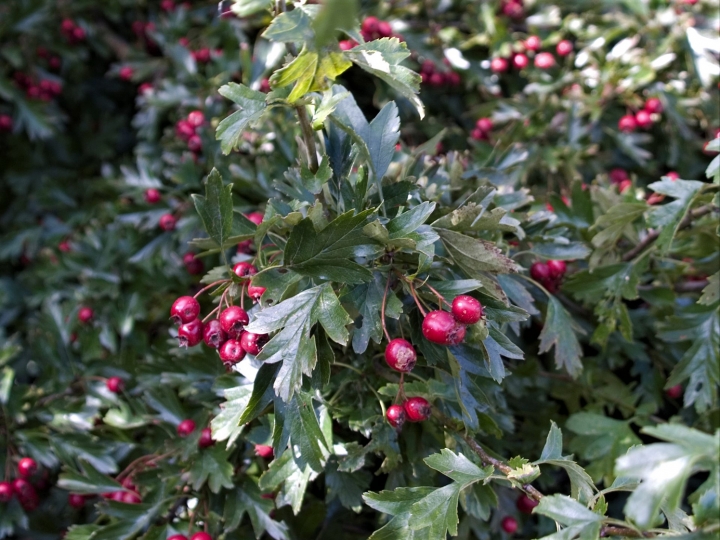















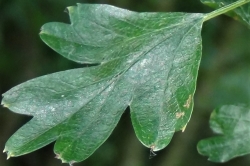
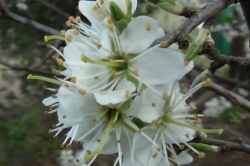
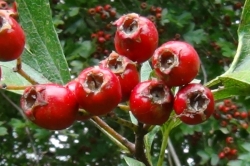
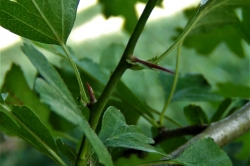
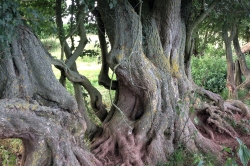
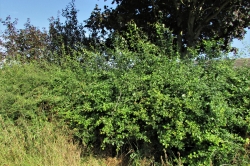






14 comments for Hawthorn
What is the best way to prepare the leaves to avoid destroying any of the benefits for the heart? I don’t know much about preparations and what will be best for this particular plant.
I’m really not sure, many people make a tea with them but eating them fresh in a salad shouldn’t destroy any health benefits.
Can the berries be eaten raw without any cooking? Or must they be cooked before eating?
The berries are perfectly safe raw but they are mostly stone with a thin covering of flesh. To make the most of them raw crush the berries with your hands or a potato masher and sieve the resulting mixture. This mixture will set like jelly rather quickly so can be used to make leathers or set other fruit mixes.
I have found a tree that I believe is hawthorn covered in berries which have picked. However it had no thorns so I want to check before I make a sauce with them.
Please check our hedgerow guide for Hawthorn, the leaf shape is fairly unique.
Do you have to remove the stone before crushing the haws? I think I read somewhere that the stone contains something toxic.
I use my hands or a potato masher with large holes and find it doesn’t damage the stones which can then be separated by adding a little water and sieving the resulting mixture.
I have a small tree that I believe may be a Hawthorn. The small berries look like pictures of Hawthorns that I have seen. However, I do not see thorns on the plant. It has grown up on its own in our town of Odessa, Missouri.
I would need to see photos to try and ID it for you. You can send them to [email protected]
What is best to use for heart treatment, leaves, flowers or berries? What are the differences? For irregular heart beats or fast speed heart beats? I found supplements made from leaves and flowers and other brand made from berries? What should we use
Any part of the Hawthorn can be used to help but not in place of medicine if you need it.
How long can you keep the leaves dried. I have a packet from 2015 .ls it safe to use?
As long as they have been kept dry in a sealed container, they should be safe to use. It is possible they may have lost some of beneficial effects after this amount of time.